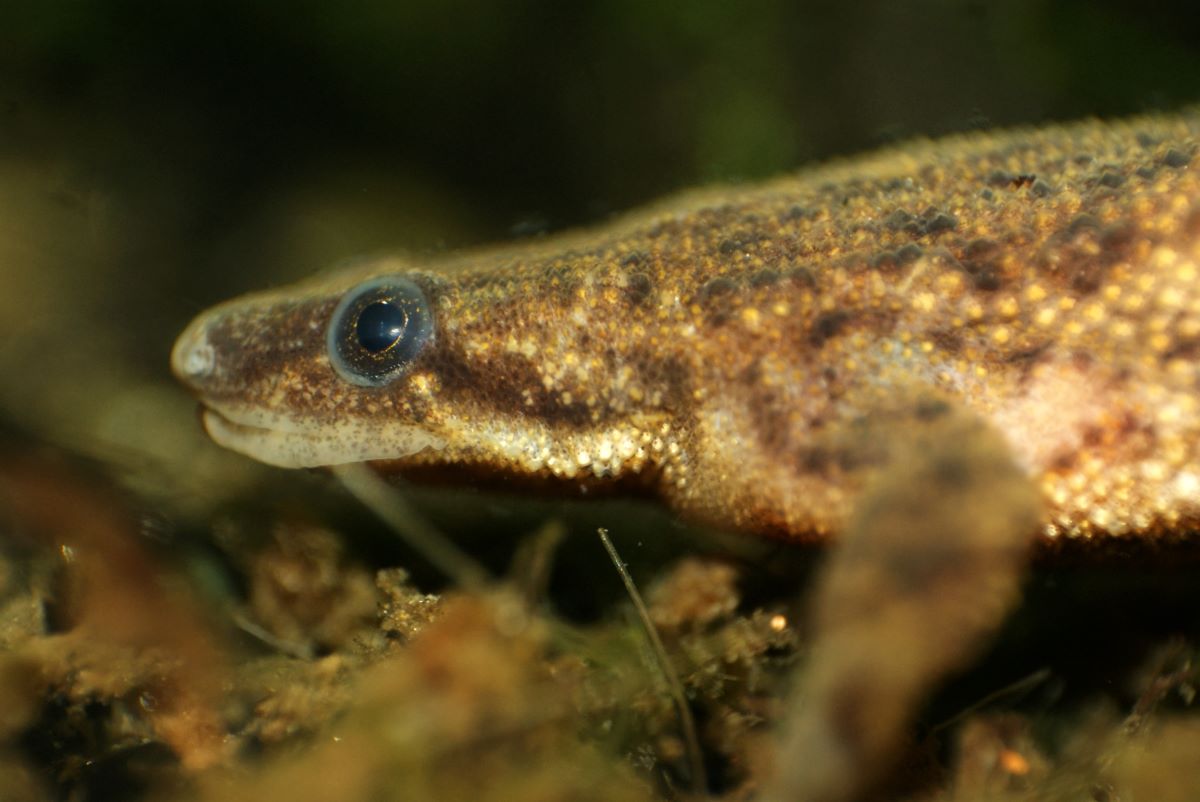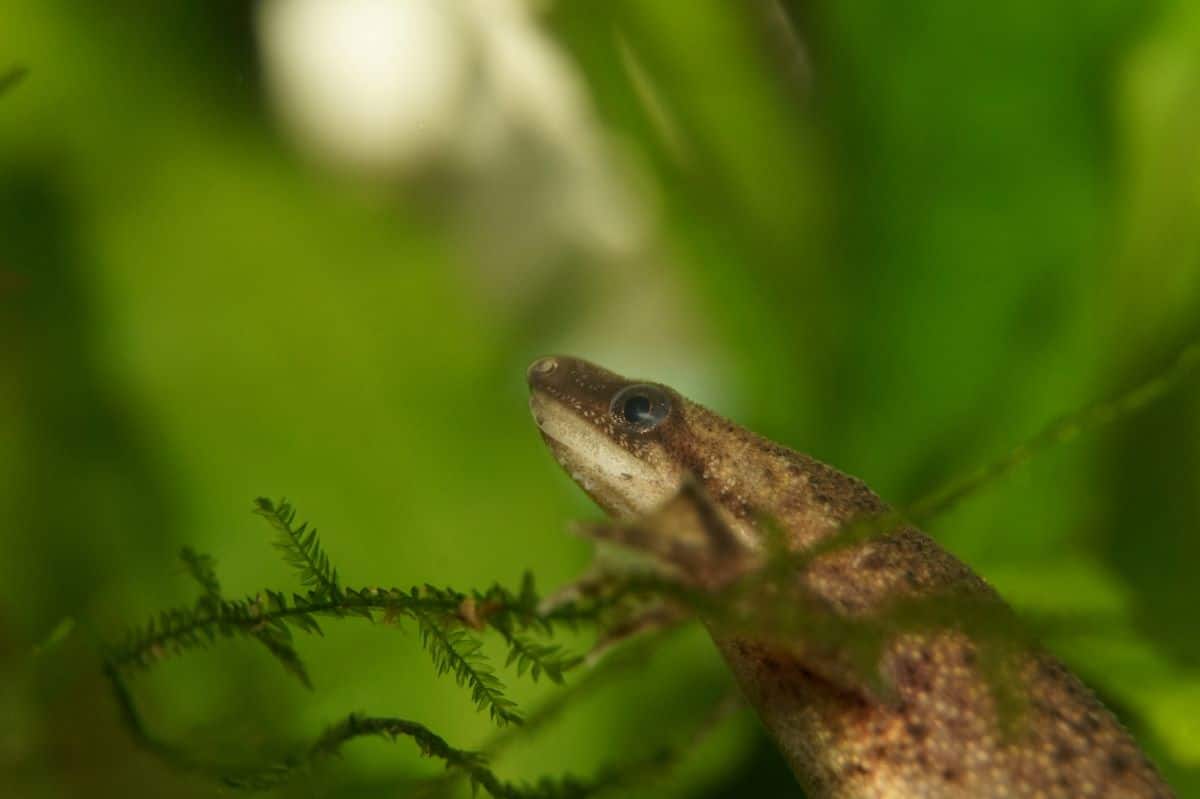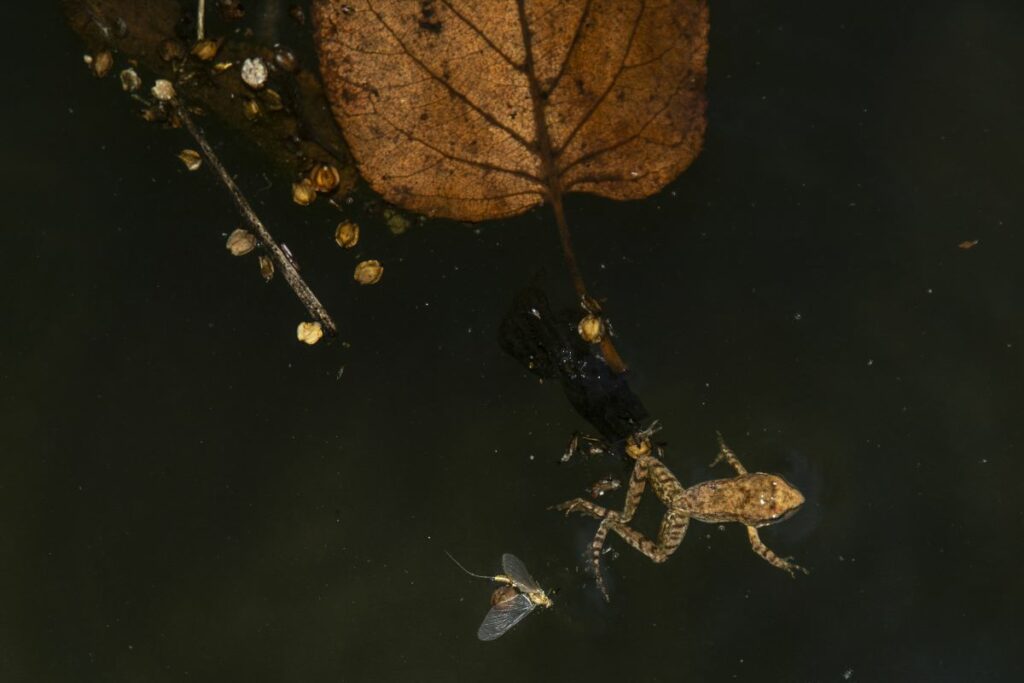the essentials in brief
Dwarf clawed frogs are fascinating little amphibians that require special conditions in an aquarium. More info here...
Dwarf clawed frogs are social animals and should not be kept alone. Read more here...
Yes, dwarf clawed frogs can be socialized with other peaceful fish species in an aquarium. You can find out more here...
Welcome to our guide to dwarf clawed frogs! In this informative blog article you will discover the fascinating world of these small amphibians and learn how to keep them in an aquarium in a species-appropriate manner. If you've always been interested in these feisty frogs or are planning to adopt them as new pets, you've come to the right place.
We give you an overview of the important aspects of keeping dwarf clawed frogs and provide you with valuable tips to offer them a happy and healthy home. Find out now everything you need to know about dwarf clawed frogs and how to optimally integrate them in your aquarium.
The fascinating world of the dwarf clawed frogs

Dwarf clawed frogs, also known as Hymenochirus, are fascinating little creatures that take the hearts of aquarists by storm. With their lovable nature and charming appearance, they are among the smallest frog species in the world and are a real asset to any aquarium. are your homeland the dense rainforests of Africa, more specifically the rivers and swamps of countries like Nigeria, Cameroon and Gabon. But these cute frogs have also found their place in aquariums all over the world.
Of aquatic life they are with a body length of only 2 to 5 centimeters and tiny claws on the hind feet perfectly adapted. Their large, shiny eyes give them a particularly cute and inquisitive facial expression that immediately captivates aquarium enthusiasts. Skilled swimmers and good climbers, dwarf clawed frogs lead a fascinating life between water and air.
A fascinating feature of the dwarf clawed frogs is their ability to to breathe both underwater and on the surface. They have gills to filter oxygen out of the water, but also lungs to breathe air. This allows them to go on long dives as well as gasping for air on the water surface when needed.
Did you know already?
Dwarf clawed frogs get their name from the tiny claws on their hind feet, which help them move in water and climb plants and other surfaces. These special claws are a fascinating feature and make the frogs real diving artists. They can float on the bottom of the aquarium as well as on the water surface or in the plants, which makes them fascinating objects to observe.
are dwarf clawed frogs extremely social animals and should never be kept alone. A flock of at least three to five frogs is recommended to give them the opportunity to keep each other company and express species-typical behaviors. In a larger group they feel safer and can show their natural behavior.
The optimal aquarium equipment for dwarf clawed frogs
A species-appropriate aquarium is key to allowing dwarf clawed frogs to feel comfortable in their environment and live a healthy and happy life. Proper setup is critical to meeting the needs of dwarf clawed frogs and creating a near-natural environment that mirrors their habitat in the rainforests of Africa.
- The right aquarium size
For dwarf clawed frogs, an aquarium of at least 40 liters recommended. A larger tank offers more space for plants, hiding places and allows a swarm of three to five frogs to be kept. More space also means the aquarium is more stable and the water quality is easier to control.
- plants and hiding places
Dwarf clawed frogs like to hide in densely overgrown water bodies. thats why a rich planting with floating plants such as water lettuce (Pistia stratiotes) or duckweed (Lemna minor) ideal for them. But other aquarium plants such as Java fern (Microsorum pteropus) or types of moss also offer them places to hide and climb. The plants not only contribute to the aesthetics of the aquarium, but also improve the water quality by absorbing pollutants and producing oxygen.
- The right water temperature
The water temperature is a crucial factor for the well-being of the dwarf clawed frogs. The water should constantly at a temperature between 24 °C and 28 °C being held. A control heater is therefore essential to keep the temperature in the aquarium constant. A thermometer allows the temperature to be checked regularly and adjusted if necessary.
- water quality and filtration
Good water quality is of great importance for the health of dwarf clawed frogs. Regular water changes and the use of an efficient filter system are essential to reduce impurities and pollutants in the water. An internal biological filter that breaks down organic waste and provides biological filtration is often a good choice.
- Lighting
Since dwarf clawed frogs are active at dusk and at night, it is not necessary to have too much lighting in the aquarium. Dimmed lighting with a timer that illuminates the aquarium about 10-12 hours illuminated is sufficient. In this way, the frogs can develop a natural day-night rhythm and live less stressed.
- substrate
Fine gravel or sand is suitable as a substrate, which offers the frogs a pleasant surface for climbing and hiding. In order to avoid injuries to the frogs' sensitive feet, the substrate should not be too coarse.
- Water conditioner and toiletries
Water conditioners are important to free the tap water from chlorine and other pollutants and to prepare the water optimally for the frogs. Additionally can special care products such as bacterial additives that support biological filtration and improve water quality.
- Regular care and observation
Regular maintenance of the aquarium is essential to ensure a healthy environment for the dwarf clawed frogs. Regular water changes, filter cleaning and the removal of dead plant parts are important tasks. Watch your frogs closely, to identify possible signs of illness or illness at an early stage.
Diet and care of the dwarf clawed frogs
Feeding and caring for dwarf clawed frogs is crucial to the healthy and happy life of these fascinating amphibians. As omnivores, dwarf clawed frogs feed on a varied diet of live and frozen food. Proper feeding and care not only ensure the well-being of frogs, but also help to avoid diseases.
- Diet of dwarf clawed frogs
Dwarf clawed frogs are not fastidious frogs and will take a variety of food animals. Live food is particularly popular such as mosquito larvae, artemia (brine shrimp) and daphnia (water fleas), which are a good source of protein and other important nutrients. They can be purchased from pet stores or online and are an important part of the diet.
In addition, frozen food such as daphnia or mosquito larvae can also be used. These should be thawed and rinsed well before feeding to remove any contaminants. High-quality flake or granulated food also offers a good addition and variety.
- A varied diet for optimal health
A varied diet is important so that the dwarf clawed frogs get all the nutrients they need. Variety in the feed ensures that the frogs receive a balanced diet and nothing essential is missing. Rich feeding enables the frogs to live out their natural hunting and eating habits.
- Regular cleaning and changing of the water
Aquarium maintenance and good water quality are essential to the health of dwarf clawed frogs. Regular cleaning of the aquarium, suctioning off faeces and uneaten food and removing dead plant parts help keep the water clean and clear.
Regular water changes are just as important to remove pollutants and toxins and to keep the water quality at a high level. A weekly water change of about 20-30% of the water volume is recommended. It is important to ensure that the new water is well prepared so as not to disturb the balance of the aquarium.
Tip: Regular checking of the water quality is crucial for the well-being of the dwarf clawed frogs. Check the levels of ammonia, nitrite, and nitrate in the aquarium water weekly to ensure they are within acceptable ranges. High levels of ammonia and nitrite can be toxic to the frogs and cause health problems.
- water quality and water temperature
Water quality and water temperature are crucial factors for the well-being of frogs. To ensure the optimal ambient temperature for dwarf clawed frogs, the water temperature should be constant between 24°C and 28°C lay. A control heater is therefore required to maintain the temperature in the aquarium.
Another important aspect is checking the water levels, especially ammonia, nitrite and nitrate. These should be checked regularly to ensure they are within acceptable limits. Water changes, as mentioned earlier, are a great way to improve water quality.
The right socialization of dwarf clawed frogs and fish
Many aquarists are concerned with the question of whether dwarf clawed frogs can be harmoniously socialized with other fish. The good news is that socialization is possible, however there are a few things that need to be considered to ensure successful socialization. Proper selection of fish species and accommodating the needs of both species are critical to a peaceful and harmonious community.
- Choosing the right species of fish
Not all fish species are equally suitable for socializing with dwarf clawed frogs. It is important to choose fish who are peaceful and tend to stay at the bottom of the aquarium. Aggressive fish or those that like to tug at the frogs' tail fins do not make good social partners. Instead, rather calm, peaceful and not too large fish species should be considered.
- Aquarium size and swarm behavior
The size of the aquarium also plays a role in socialization. A sufficiently large tank offers the fish and the dwarf clawed frogs enough space to avoid each other and to live out their natural behavior. A swarm of three to five animals is recommended, as the animals feel safer in the group and have less stress.
- substrate and hiding places
A structured environment is important for socialization. The substrate should be fine to protect the frogs' sensitive feet. Also hiding places such as caves, roots or stones are useful so that the frogs can withdraw when they are looking for rest. At the same time, these hiding places also offer the fish a place to retreat if they want to get out of the frogs' field of vision.
- food and eating behavior
Another important aspect is the food composition and the eating behavior of the fish. Dwarf clawed frogs are bottom dwellers and feed primarily on food found at the bottom of the aquarium, such as B. frozen food or live food. It is important that the fish do not eat all the food before the frogs, but that the frogs also have access to their food. Therefore, care should be taken that feed tablets or pellets can also be placed on the substrate, so that the frogs are well taken care of.
- Observation and Adjustment
After socialization, it is important to closely monitor the behavior of the two species. Observe how fish and frogs interact and if conflicts arise. If you notice signs of stress or aggression from the frogs or the fish, you need to make adjustments if necessary and, if necessary, change the fish species.
Digression: The diversity of the dwarf clawed frogs
The world of dwarf clawed frogs is diverse and fascinating. There are different types, which differ in color and size and each bring their own special features. Each species has its own history and its own aquarium needs. Here are some of the most popular dwarf clawed frog species:
- African dwarf clawed frog (Hymenochirus boettgeri):
The African dwarf clawed frog is one of the best known and most commonly kept species in aquariums. It comes from the rivers and swamps of West Africa and impresses with its charming appearance. His skin color varies from light beige to bright yellow and his body is slender and agile. It reaches a size of about 2,5 to 3,5 centimeters, making it one of the smallest frog species in the world.
Note: Before you socialize dwarf clawed frogs with other fish species, it is important to find out about the compatibility of the respective species. Not all Pisces are peaceful and ground-oriented, which can lead to stress and conflict. Make sure your roommates aren't interested in the frogs as prey and that they have similar water quality and temperature requirements.
- the Congo River dwarf clawed frog (Hymenochirus feae):
Another popular species among aquarists is the Congo River dwarf clawed frog from Central Africa. He is characterized by his bright green coloring that gives it a special charisma. The small claws on the hind feet are particularly noticeable in this species. The Congo River dwarf clawed frog is slightly larger than the African dwarf clawed frog and can grow up to 4 cm long.
- the West African dwarf clawed frog (Hymenochirus curtipes):
The West African dwarf clawed frog is another fascinating species from Africa. It is an interesting eye-catcher in the aquarium because of its skin in various shades of brown and beige is patterned. Compared to the other species, the West African dwarf clawed frog is somewhat shy and reserved. However, with the right care and patience, he can develop into a curious fellow.

Dwarf clawed frogs - sociable aquarium inhabitants
Learn about the fascinating world of dwarf clawed frogs and how to keep them happy and healthy in your aquarium. From the right equipment for the aquarium to socializing with fish, we have brought you closer to all the important aspects. With love, patience and the necessary knowledge, you will surely be able to develop a wonderful relationship with these lively amphibians. Let yourself be enchanted by their uniqueness and create a species-appropriate home for your little darlings!



